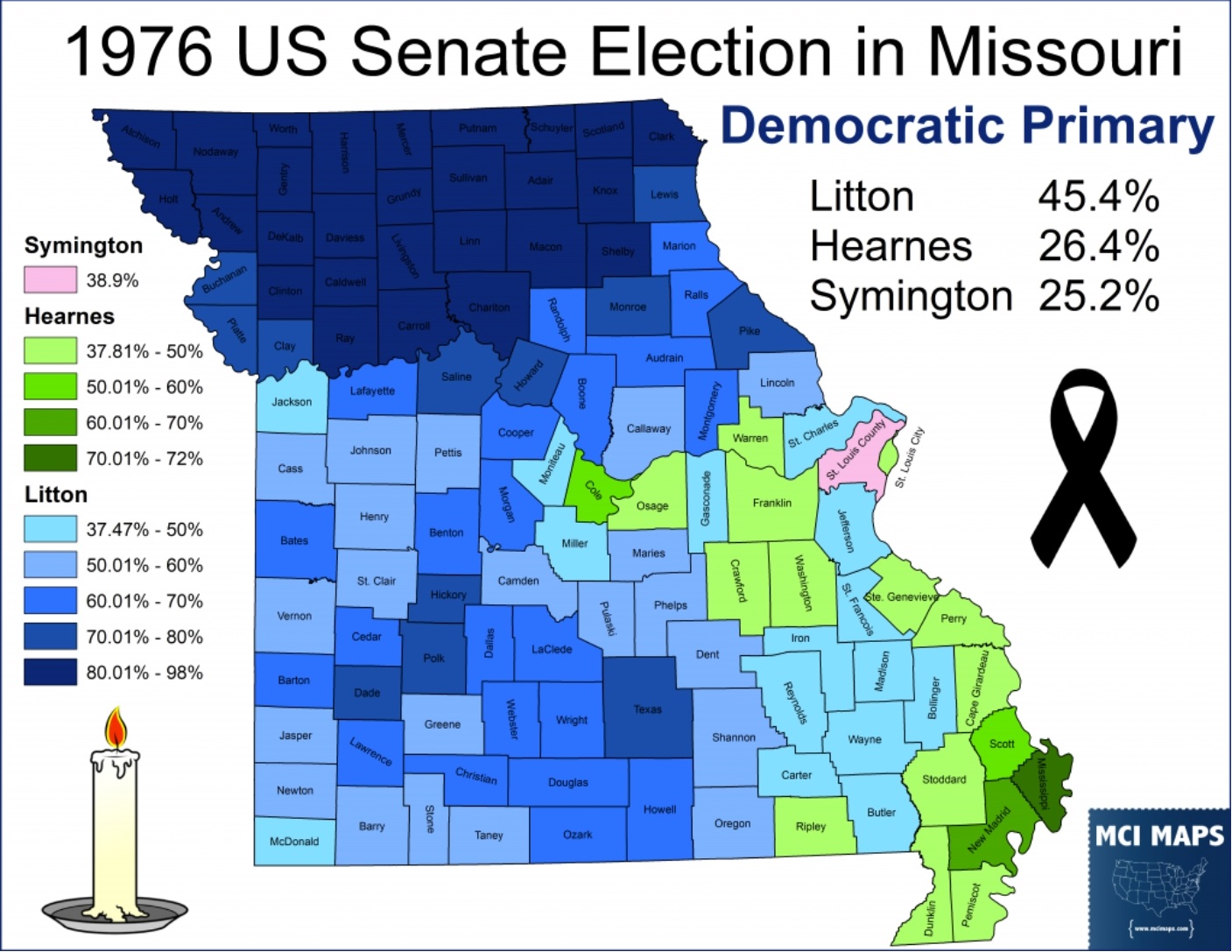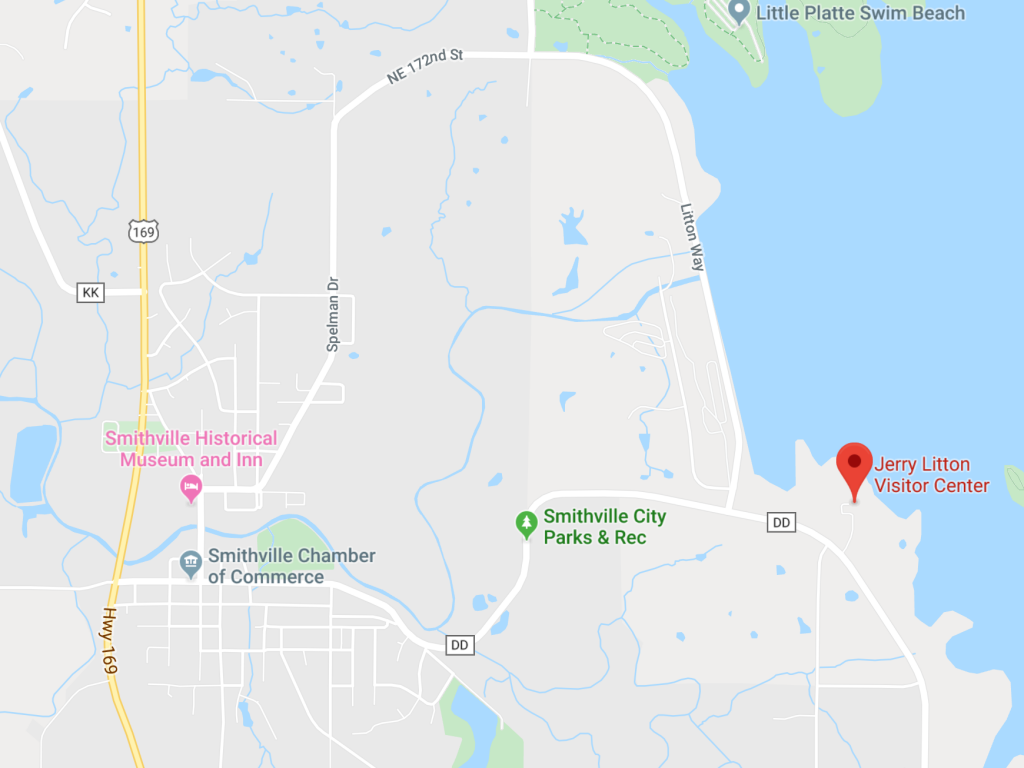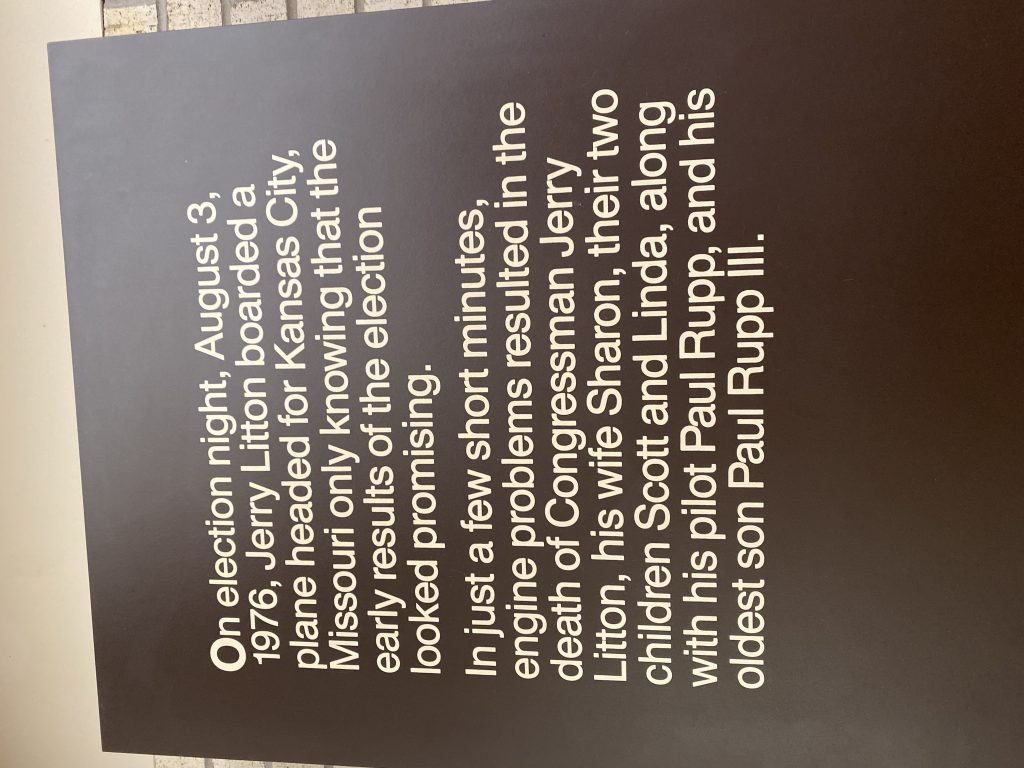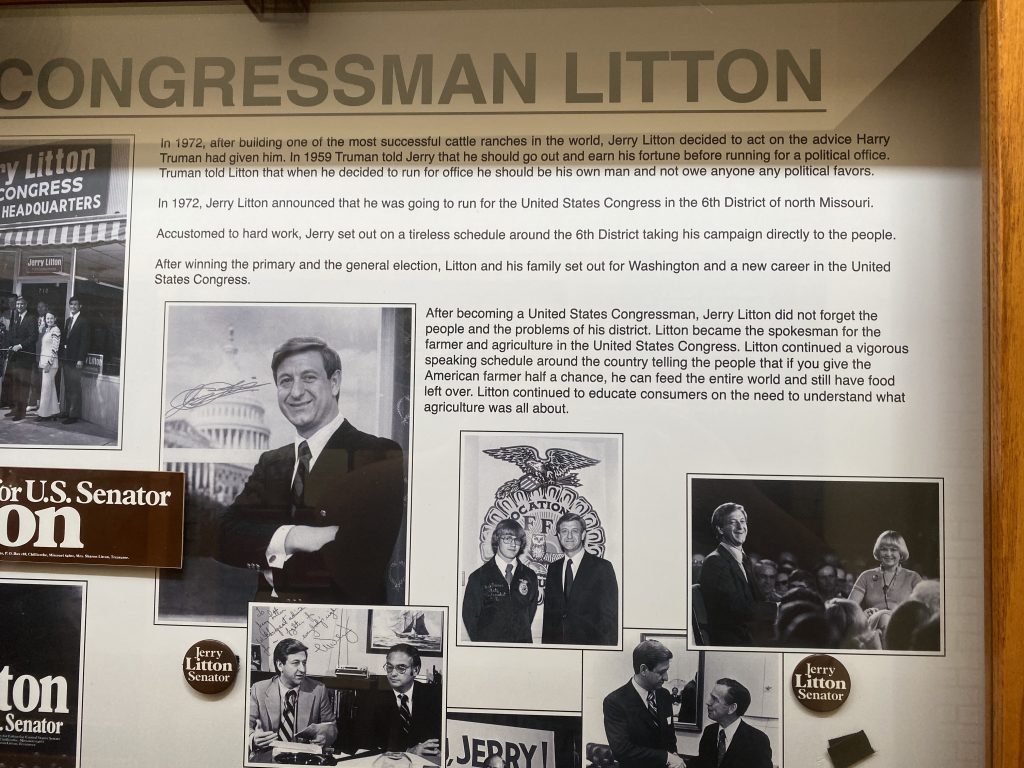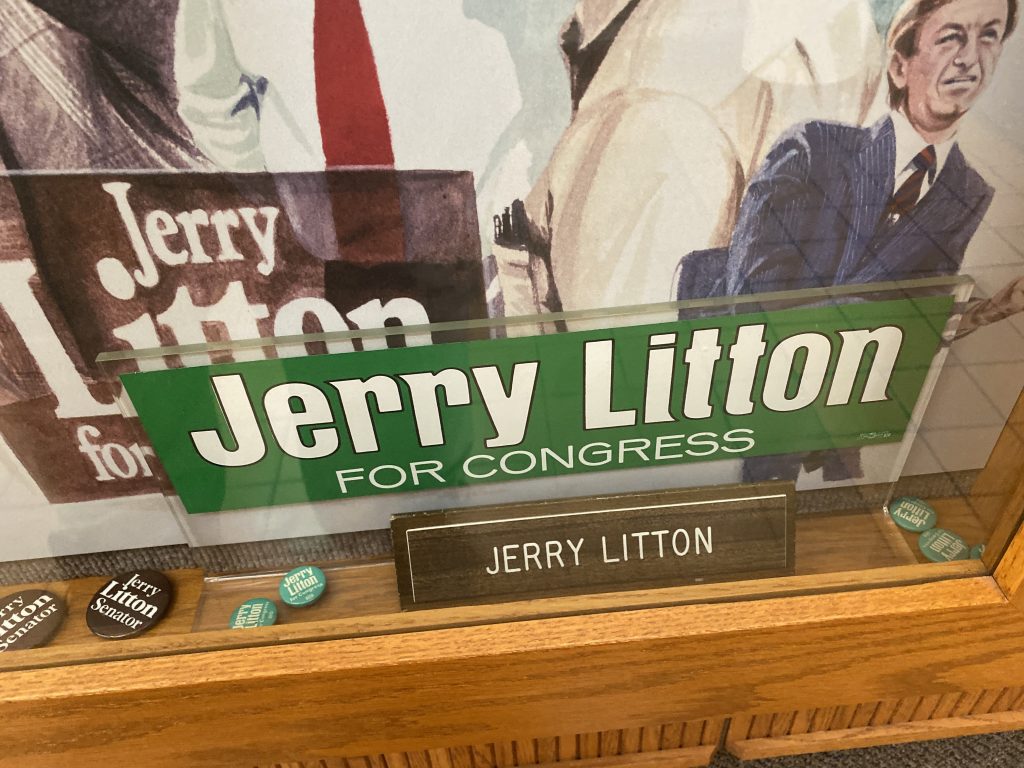Last year, I wrote an article on “The Elected Dead: When Deceased win Elections.” In that article, I looked at people who tragically died before elections but won their races anyway. The story here follows a similar dynamic – but instead it looks as the sad case of a man who died on the same night he won his election.
Jerry Litton – The Missouri Farmer
Jerry Litton, a man who in older Missouri political circles is remembered as a man of infinite potential who’s life was cut short; is not well known today. Litton hailed from Lock Springs, Missouri – a small farming community in the heart of the state’s northern farming counties. The old saying goes that Missouri can be divided by I-70; the connector of Kansas City and St Louis. Almost everything North of I-70 is heavily agriculture influenced and indistinguishable from Iowa. Litton was part of this farming culture. He was National Secretary for Future Farmers of America while he was in college and grew up on his parents cattle ranch.
Litton got involved in politics at a young age. While in college he was President of the University of Missouri Young Democrats – and he was chair of the “National Youth for Symington” organization – which was backing Missouri Senator Stuart Symington in his 1960 Presidential bid. Litton would go on to work on the campaigns for both John F Kennedy and Lyndon Johnson. Litton had political ambitions. As he turned his father’s modest ranch into a multi-million dollar operation, he worked to build his name ID and become a respected member of the farming society in his region.
First Congressional Run
Litton decided to run for Missouri Congressional District 6 when Democratic Congressman William Hull decided to retire. Litton’s political roots and reputation as a devout farmer/rancher aided him in appealing to the large number of farm counties in the district. Litton lived out in Linvingston County; in the middle of Missouri’s northern farm counties.
State Representative Charles Broomfield, who hailed from Clay County in North Kansas City, was considered Litton’s strongest challenger. Broomfield had a good deal of backing in the KS suburbs, but was not known in farm country. State Senator Truman Wilson represented counties just north of Clay – namely Buchanan, Clinton, and Caldwell. However, he generated less support as the suburbs rallied behind Broomfield and farm country rallied around Litton.
When the primary results came in, Litton secured a 3% win over Broomfield. Litton won across the farm counties of the district, only losing the region closer to Kansas City. Broomfield racked up strong raw vote margins in the more populous North Kansas City area, but it was not enough to overpower Litton’s rural base.
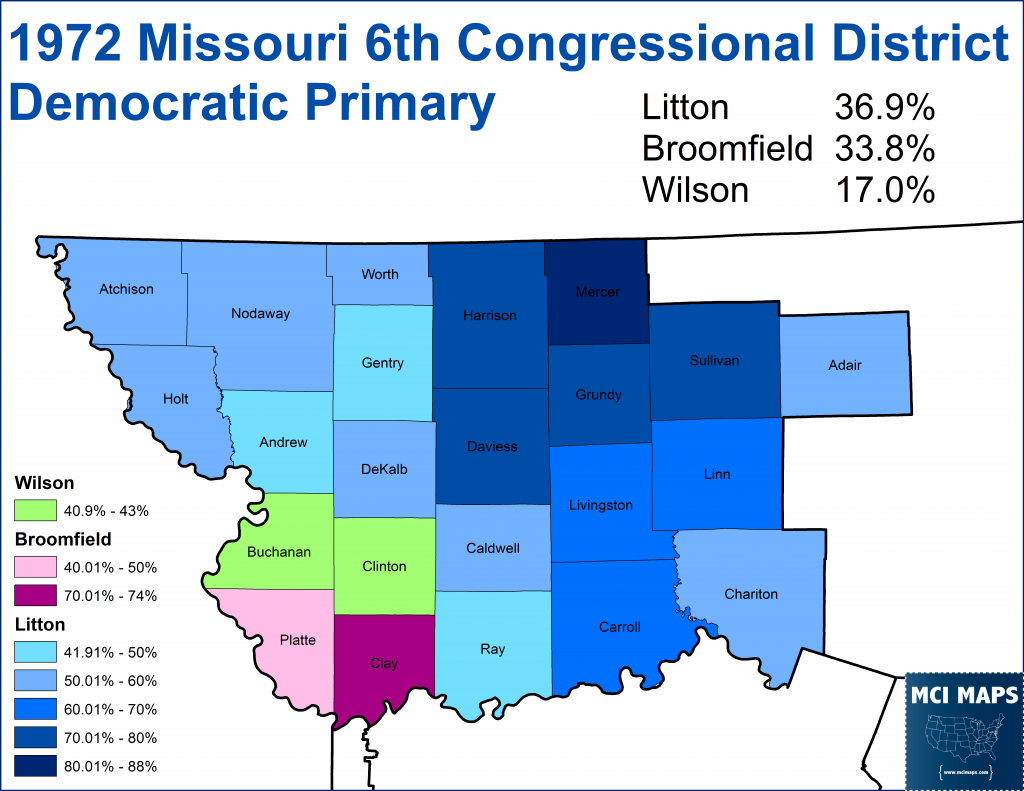
Once the primary was over, the Democratic establishment rallied around Litton. It was believed he’d be able to hold the district for his party, but a strong campaign emerged as Nixon was expected to easily sweep the region in his landslide re-election.
Litton defeated his Republican opponent, Russell Sloan, by just under 10 points.
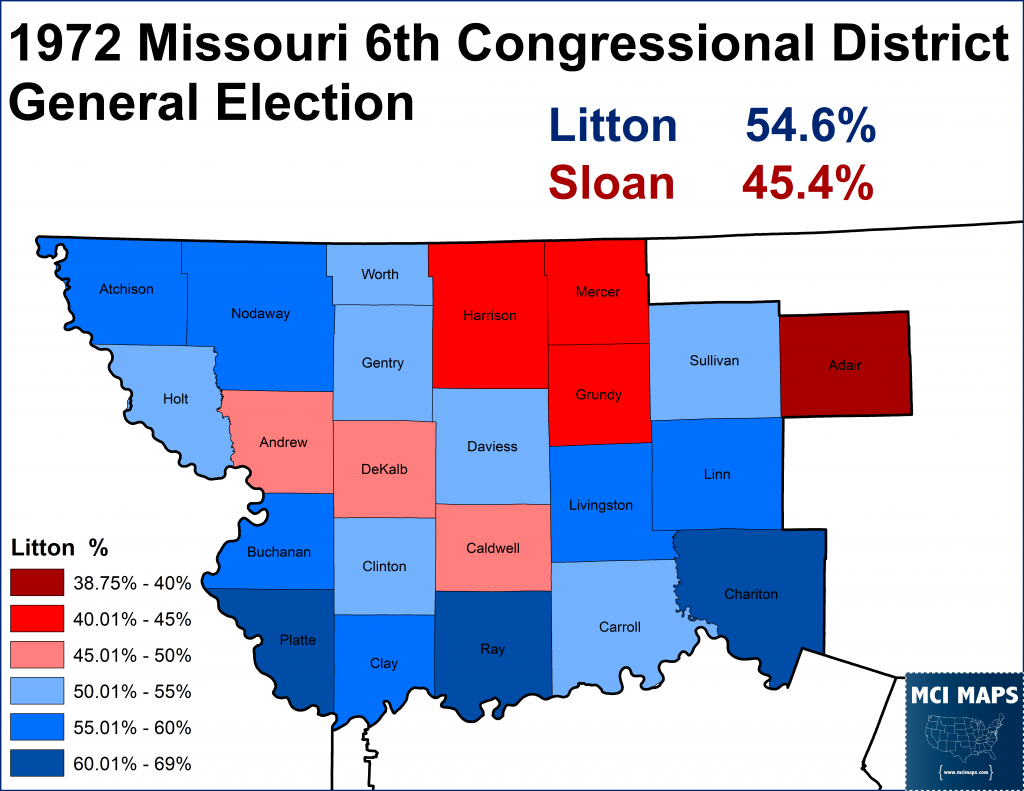
Litton won the same night Nixon easily took the district – which also backed Republican Lit Bond in the 1972 Governor Election.
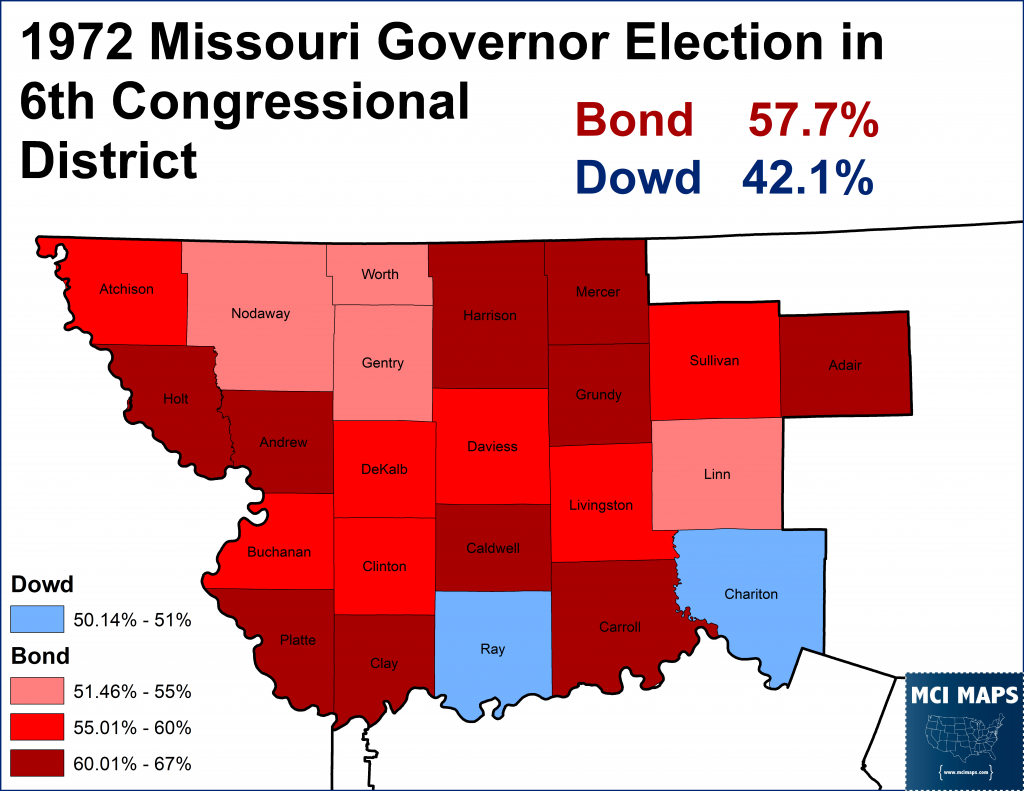
Bond won all but two counties – winning many of the farm counties Litton took in the general.
The 1974 midterms were a walk for Litton. The Republicans put up no real effort to defeat him and he took his district with 79% of the vote.

Litton’s re-election would leave him in perfect position to make a bid for higher office.
1976 US Senate Run
In 1975, Democratic Senator Stuart Symington announced he would not run for re-election. This meant an open Senate seat in 1976 – a race both parties would aim for. Litton began to express a desire to run in late 1975 and formally announced his candidacy in February of 1976. The two other heavyweights in the race were former Governor Warren Hearnes and St Louis Congressman James Symington (son of the Senator).
Litton was well known in his district, but he also had a statewide microphone. Since 1974, the Congressman had been hosting a show called “Dialog With Litton.” The show took place at a town-hall style event where Litton had national figures come on to talk about major issues. This video shows Hubert Humphrey on the program. The program was designed to educate the public but it was also designed to give Litton a statewide platform. Litton had higher aspirations, with many comparing his political mind to that of Lyndon Johnson.
All three democrats ran as conservatives and the split in the vote was more around geography and personality. Symington was the front-runner to start and both Litton and Hearnes worked to use the “legacy” card against him – arguing he was trying to inherit his father’s seat. Hearnes, however, was hurt but an IRS investigation into his finances that dragged on for years after he the Governor’s office in 1973. Litton outspent both his opponents, (he might have also self-funded but I cant find confirmation of this), to try and make up the name-ID gap. Polls and observations indicated that as attacks on Symington worked, but Hearnes was hurt by the investigation, so Litton was beginning to rise. The final months saw a furious Litton campaign effort to try and rack up votes in the North and around Kansas City. Hearnes and Symington, meanwhile, were both competing for the St Louis vote.
When the results became to come in on election night, Jerry Litton was the clear winner – taking 45%; well ahead of his nearest opponent. He racked up over 80% across much of the farm counties of North Missouri

Litton, his wife, and children all got in small commuter plane to go from their home in Chilicoth to Kansas City. The results were looking good and while no declaration has been made yet, the congressman was optimistic. One of his top aids, Kristi Wyatt, spoke to him by phone from Kansas City. The Congressman was getting read to head to the plane to meet his staff and supporters in the city. He told Wyatt “Damn, we’re just not going to win, we’re going to win big. See you in half an hour.”
The congressman and his family went to the airport. The plane took off, suffered engine failure within minutes, crashed, and exploded; killing all on board. Litton, his wife, two daughters, the pilot, and the pilot’s son, were all killed.
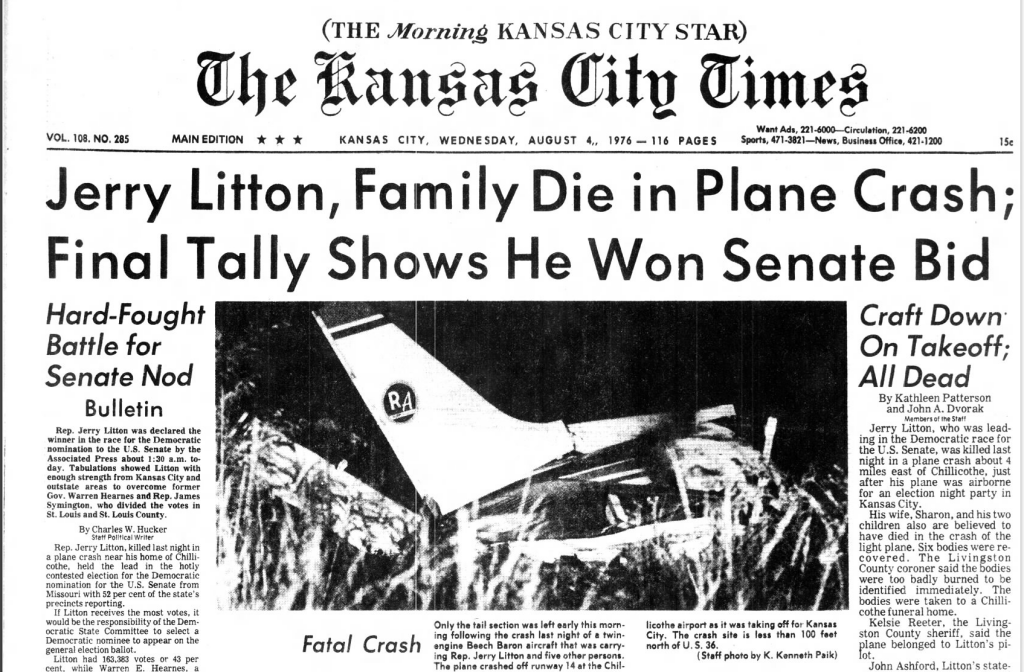
The horrible tragedy sent shock-waves across Missouri – as well as generating national coverage. Litton was seen as a rising star in the party, just 39 at the time – he had defeated both a former Governor and son of the outgoing Senator.
The tragedy meant that that the Missouri Democratic executive committee would need to meet and pick a replacement. Two days after the crash, Symington made it clear he would not seek the nomination. Hearnes, meanwhile, remained mum on the selection process. After several days of mourning, the campaign for the nomination resumed. Hearnes made his intention to seek the nomination clear – but another candidate, Treasurer Jim Spainhower, announced his bid as well. Spainhower had just won his primary unopposed and was looking strong in November.
Several Litton supporters and his former Campaign chairman expressed their support for Spainhower. However, Hearnes was benefiting from close ties to many members of the 60 member executive committee. In addition, party leaders worried that giving the nomination to Spainhower would put the Treasurer race at risk. Republicans weren’t expecting to beat Spainhower himself in the Treasurer race, but an open seat could be a different story. In addition, Democrats began to increasingly see the US Senate race as a potential lost cause. Attorney General John Danfroth was seen as a strong candidate (who had only lost the the elder Symington by 3% in 1970) and Missouri Democrats didn’t want to put Treasurer at risk for what might be a doomed Senate run.
In the end, Hearnes, who long claimed to have the support of a majority of the committee, easily won the nomination by a vote of 38-22.
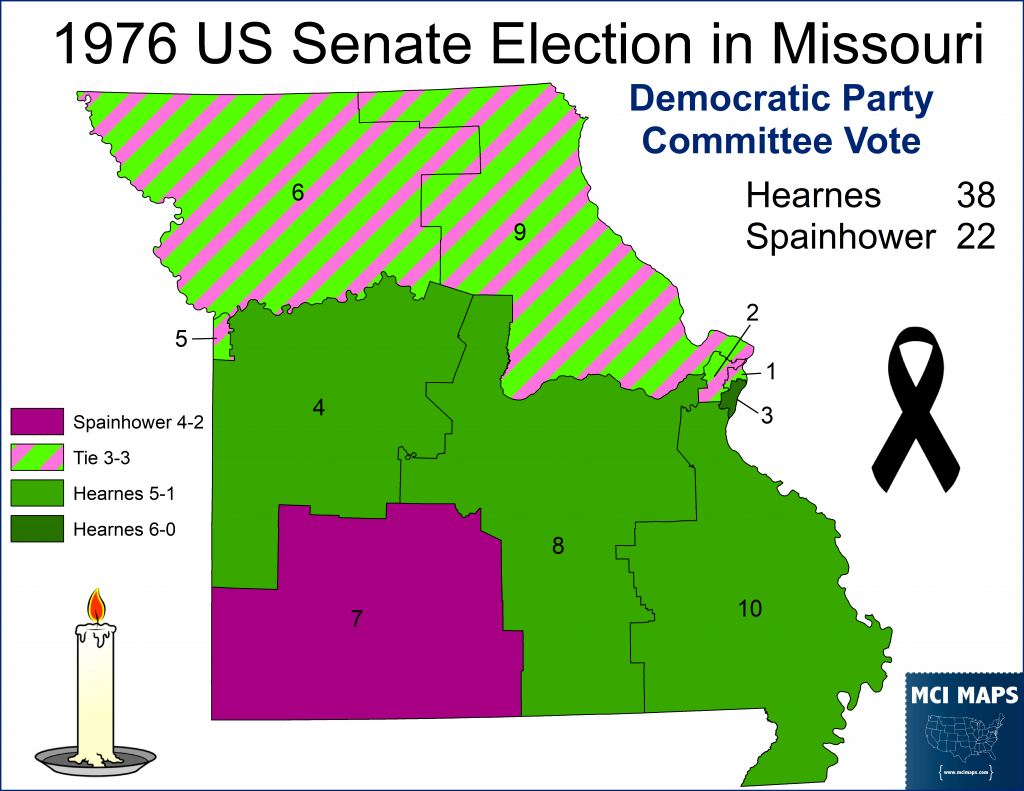
Danforth openly said he relished the prospect of facing Hearnes, who was stilling reeling from the investigations going on. Danfroth had walked through the GOP primary and was flushed with money. The Danforth campaign actually spent most of primary night rapidly cancelling an ad blitz that he prepared to launch against Litton for the very next day. Now they faced a former Governor who’s personal finances were under investigation. All Danforth had to attack Litton on was how much money the congressman had spent in the primary.
The Senate election proved to be the lost cause many Democratic insiders expected it to be. Danforth beat Hearnes with 57% of the vote.
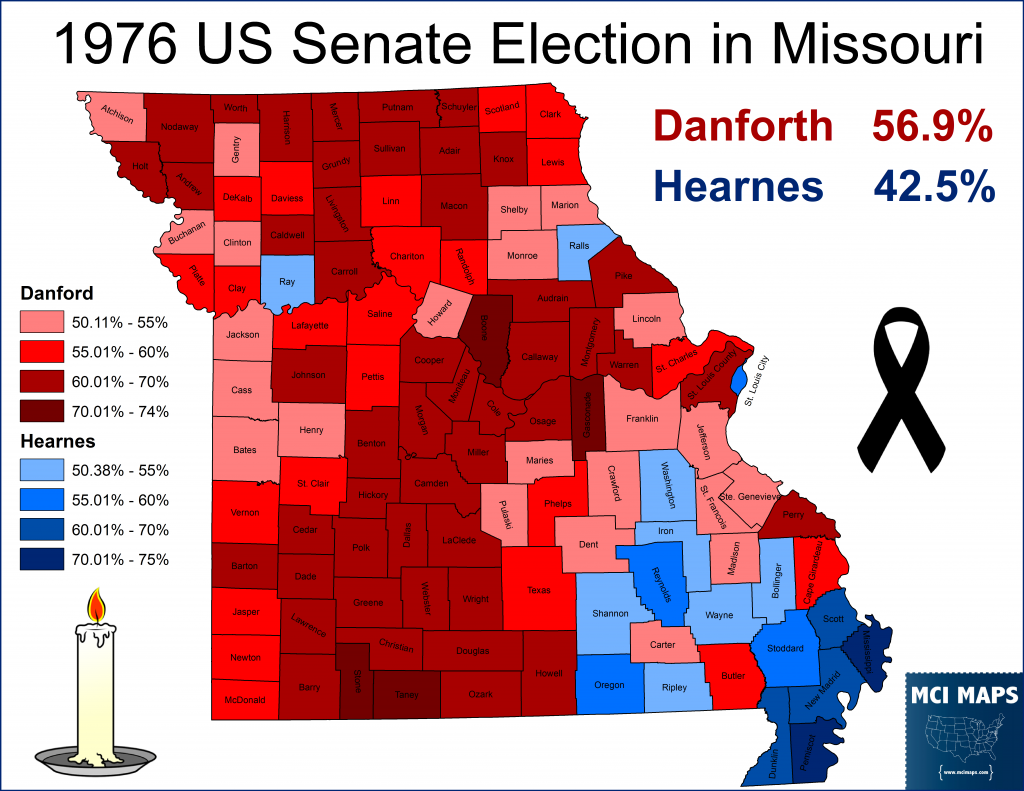
The same day Hearnes was losing the Senate race, Jimmy Carter was taking the state with 51% of the vote. Carter also took the vote in Litton’s congressional district.

Hearnes performed worse than Carter across most of the state, but especially worse in the rural counties (outside the southeast boot).

Statewide that same night, Democrat Joseph Teasdale defeated Incumbent Republican Governor Kit Bond and Treasurer Spainhower was easily re-elected. Hearnes was the worst-performing statewide Democrat of the night. Democrats also lost the LT Governor and Attorney General Races, but both by very narrow margins. The night was overall a mix for both parties.
In Litton’s district, the Democratic nominee, Morgan Maxfield, was originally the favorite to win the seat. Maxfield had been close to Litton and easily made it through the primary. However, a scandal erupted in the fall when his campaign manager resigned and generated a scandal involving Maxfield’s marital status and personal finances. The marital issues, namely that he and his wife had been separated for 6 years but not divorced, while Maxfield referred to himself as single, hurt him with rural voters. The Republican nominee, Tom Coleman, won the seat by 18 points.

The northeastern end of Missouri would be represented by a Republican until the 1990s.
Litton’s Legacy
It is clear Litton was a rising star in the party. He did face a formidable challenge that November – as Danforth was a GOP heavyweight. Litton likely had good options regardless. A win would have made Litton a future Presidential candidate. A loss would have likely led to a Carter Administration post – potentially Secretary of Agriculture. The soon-to-be-President had appeared on Litton’s talk show and told colleagues he believed Litton could be a future President one day.
Litton can still be learned about at the Jerry Litton Visitor center in Smithville, MO. This site, just outside the Kansas City urban sprawl, lies in what was once the 6th district. I visited it on my road trip just a few weeks back.
We will never know the alternate history that could have unfolded if Litton had won the Senate seat. He’d have been a prime Presidential candidate in 84 or 88, or even 1992.
One other fascinating and yet morbid fact about this election cycle. The same say Danforth went from being Attorney General to US Senator, the election for AG was held. The winner, a young politician named John Aschroft. For those of you not chuckling as you read this – Ashcroft would go on to serve as Governor of Missouri and then US Senator. He would then lose re-election in 2000 to then-Governor Mel Carnahan – who had died two weeks earlier in a plane crash.

The moral of the story is rather simple. If you are elected official, and especially if you are from Missouri, stay out of these smaller planes.
Stick with Southwest.

